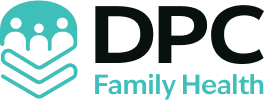TL;DR:
- Direct Primary Care (DPC) is a membership-based healthcare model with a flat monthly fee.
- Key features: direct patient-doctor relationship, simplified administrative processes, and personalized care.
- DPC typically sees 6-8 patients daily, compared to 20-30 in traditional healthcare.
- Cost predictability is high in DPC, with typical fees of $50- $150 for individuals, $150-$300 for families, and $10-$50 for children.
- Benefits include reduced paperwork, improved health outcomes, and cost savings, particularly for the uninsured and small businesses.
- Use resources like DPC Mapper and DPC Frontier to find a DPC practice.
- Starting a DPC practice includes creating a business plan and marketing effectively.
Ever feel like navigating healthcare is more complicated than it needs to be? Let me introduce you to the Direct Primary Care (DPC) model—a true game-changer. Imagine paying a flat monthly fee that covers all your primary care needs without dealing with insurance companies or surprise bills. DPC brings back the good ol’ days when your doctor actually knew your name and had time to talk. Are you intrigued yet? Keep reading to learn how this simplified healthcare solution can save you from stress, time, and money.
Understanding the Direct Primary Care Model
Direct Primary Care (DPC) is a healthcare model that operates on a membership basis. It avoids traditional insurance billing, where patients pay a flat monthly fee per appointment/procedure. This eliminates dealing with insurance companies and their paperwork. Instead, you build a direct relationship with your doctor, simplifying administrative processes and providing more personalized care.
The flat fee system in DPC offers many benefits over traditional insurance models. Firstly, it provides cost predictability. You know exactly how much you pay monthly, typically resulting in lower expenses than traditional insurance premiums. This also encourages better healthcare habits, as you don’t have to worry about co-pays or additional charges for visits.
Key Features of Direct Primary Care
- Direct patient-doctor relationship
- Membership-based structure
- Flat monthly fee
- Simplified administrative processes
- Focus on personalized care
DPC focuses on creating a more straightforward and effective healthcare experience. By eliminating the middleman (insurance companies), both patients and doctors can concentrate on what truly matters: health and wellness. The membership model ensures that patients receive comprehensive care without the unexpected costs often associated with traditional insurance.
Comparing Direct Primary Care and Traditional Healthcare Models

Regarding patient volume, Direct Primary Care (DPC) is a game-changer. Physicians in DPC typically see only 6-8 patients a day. In contrast, doctors in traditional practices often juggle 20-30 patients daily. This lower patient volume in DPC means more one-on-one time with your doctor and less waiting time. You get to discuss your health concerns in detail without feeling rushed.
On the administrative side, DPC has a major edge. Traditional healthcare models depend heavily on health insurance to cover most medical services and products. This leads to many paperwork and administrative tasks for doctors and their staff. In DPC, there’s no third-party insurance involved, eliminating those administrative headaches. Doctors can focus more on patient relationships and outcomes than paperwork and insurance approvals.
DPC also excels at cost predictability. In traditional models, healthcare costs vary wildly due to co-pays, deductibles, and surprise bills. DPC offers a flat monthly fee, making it easier to budget healthcare expenses. This transparency encourages patients to seek care when needed rather than delay visits due to cost concerns.
Key Differences
- Patient volume
- Administrative overhead
- Cost predictability
- Patient Satisfaction
Lastly, let’s talk about patient satisfaction and health outcomes. DPC’s focus on personalized care can lead to better health outcomes. With more time and attention from your doctor, issues can be identified and addressed earlier. This proactive approach often results in higher patient satisfaction than the traditional model, where care can feel rushed and impersonal.
| Aspect | Direct Primary Care | Traditional Healthcare |
|—————————–|———————|————————|
| Patient Volume | 6-8 per day | 20-30 per day |
| Administrative Overhead | Low | High |
| Cost Predictability | High | Variable |
Benefits of the Direct Primary Care Model
Direct Primary Care (DPC) shines by offering a more personalized and comprehensive healthcare experience. One standout benefit is the ample time patients get with their doctors. Physicians aren’t rushing through appointments to meet quotas in a DPC model. Instead, they can spend quality time understanding your health concerns and crafting personalized care plans. This focus on individualized attention leads to better preventive care and early identification of health issues.
Financially, the DPC model is a win for many groups. The predictable costs are a breath of fresh air for the uninsured, small business owners, and independent contractors. Instead of unpredictable expenses tied to traditional insurance, DPC operates on a flat monthly fee. This transparency makes budgeting for healthcare straightforward and removes the stress of unexpected medical bills. Plus, the simplified administrative processes mean less time and money spent on paperwork, allowing doctors to focus more on patient care.
Main Benefits
- More time with patients
- Reduced paperwork
- Comprehensive care
- Beneficial for uninsured and small businesses
- Improved health outcomes
- Lower overall healthcare costs
Cost Structures in Direct Primary Care

Direct Primary Care (DPC) is all about simplicity and predictability when it comes to cost. The core of DPC’s cost structure revolves around a flat monthly fee, which means no more guessing games with your healthcare budget. This monthly fee typically covers a wide range of primary care services, making it easier to plan your expenses. Whether you’re visiting the doctor for a routine check-up or getting lab work done, the cost remains consistent, providing peace of mind and financial stability.
DPC fees, however, can vary based on several factors, such as the practice, location, and services offered. Generally, you can expect fees to range from $50 to $150 monthly for individuals. Many DPC practices also offer family plans and discounted rates for children, making healthcare more affordable for larger households. Some practices even include additional services such as telemedicine consultations and wellness programs at no extra cost, further enhancing the value of your membership.
Typical Fee Structures
- Individual plans
- Family plans
- Discounts for children
- Additional services included
| Patient Type | Typical Monthly Fee | Additional Costs |
|————–|———————|——————|
| Individual | $50-$150 | None |
| Family | $150-$300 | None |
| Children | $10-$50 | None |
In summary, the DPC model offers a more predictable and often more affordable alternative to traditional healthcare. You get comprehensive access to primary care services without the hassle of insurance claims or unexpected bills by paying a flat monthly fee. This straightforward approach makes healthcare budgeting easier and encourages proactive and preventive care.
Success Stories and Examples of Direct Primary Care Practices
Emily’s New Beginning
Are you curious how Direct Primary Care (DPC) can transform lives? Let’s chat about Emily. Emily was tired of feeling like a number in the traditional healthcare system. She switched to a DPC practice and immediately noticed the difference. Her new doctor spent over an hour with her during the first visit, crafting a personalized care plan that addressed her chronic migraines and stress. Unlike her previous experiences, Emily felt heard and valued. Within a few months, she saw significant improvements in her health, thanks to the tailored attention and treatment plan. Emily’s new beginning is a testament to how DPC’s focus on personalized care can lead to better health outcomes.
Mr. Johnson’s Turnaround
Now, let’s look at Mr. Johnson’s story. He’s a small business owner struggling with traditional insurance’s high costs. Enter DPC. By switching to a DPC model, Mr. Johnson and his employees gained access to comprehensive healthcare at a fraction of the cost. His DPC physician, Dr. Josh Umbehr, even offered telemedicine consultations, making it easy for Mr. Johnson to get care without leaving work. The substantial cost savings allowed Mr. Johnson to reinvest in his business. Plus, with more consistent and personalized care, he saw improvements in his overall health. Mr. Johnson’s turnaround showcases the financial and health benefits of choosing DPC.
Key Success Factors
- Personalized care
- Improved patient outcomes
- Cost savings
How to Find or Start a Direct Primary Care Practice

Are you looking to find a Direct Primary Care (DPC) practice near you? Start by using online resources like DPC mappers and directories. Tools like DPC Mapper and DPC Frontier can help you pinpoint local DPC practices. These platforms offer a comprehensive list of DPC clinics, making it easy to find one that suits your needs. Also, don’t forget to check with local health networks for community resources that might guide you to nearby DPC options.
Starting a DPC practice is a different ball game but doable for motivated physicians. The first step is creating a solid business plan. This plan will be your roadmap, outlining the structure and services you’ll offer. Next, define your membership plans and set transparent pricing. Having clear, upfront costs is a big draw for potential patients. Once that’s sorted, focus on financial planning. Budgeting, cost management, and forecasting growth are crucial to keeping your practice sustainable and profitable.
Marketing is another crucial piece of the puzzle. You’ll need to identify your ideal patient profile and leverage both physical and digital channels to reach them. Think social media, local events, and even word-of-mouth. Engaging with your community and potential patients is vital for building trust and growing your practice.
Steps to Start a DPC Practice
- Create a business plan
- Define membership plans
- Set transparent pricing
- Budgeting and cost management
- Marketing and patient engagement
| Resource | Description |
|———————-|————————————-|
| DPC Mapper | Online tool for finding DPC practices|
| DPC Frontier | Directory of DPC clinics |
| Local Health Networks| Community resources for finding DPC |
By following these steps and utilizing these resources, you can either find a local DPC practice that fits your needs or start your own and become a part of this simplified healthcare solution.
Final Words
Exploring Direct Primary Care (DPC) has been quite a ride! We dove into what makes the DPC model unique, like its membership-based structure and flat fees. We compared it with traditional healthcare models, finding it can lead to better patient satisfaction and outcomes. Plus, we unpacked its financial perks and cost predictability.
Wrapping it up, DPC is a game-changer for personalized, hassle-free healthcare. With its growing popularity, finding or starting a DPC practice could be your next big health move. Taking control of your health can be easier than you think!
FAQ
Direct primary care pros and cons
Q: What are the pros and cons of Direct Primary Care?
A: Direct Primary Care offers benefits like predictable costs, direct doctor access, and personalized care. Downsides include not covering hospital stays and emergencies and requiring separate insurance for major medical events.
Direct primary care near me
Q: How can I find Direct Primary Care near me?
A: Direct Primary Care practices can be found using online tools like DPC Mapper or directories like DPC Frontier. Local health networks can also be a good resource.
Is direct primary care worth it?
Q: Is Direct Primary Care worth it?
A: Direct Primary Care can be worth it if you value personalized care, extended doctor visits, and predictable healthcare costs. It’s especially beneficial for the uninsured and small business owners.
Direct primary care criticism
Q: What is a criticism of Direct Primary Care?
A: A common criticism is that it doesn’t cover hospital stays or emergencies, requiring separate insurance for major medical events. Some also feel it’s impractical for those with complex health needs.
Direct Primary care monthly cost
Q: How much does Direct Primary Care typically cost per month?
A: Members usually pay $50 to $150 per month. Family plans range from $150 to $300, and children’s rates are often $10 to $50 monthly.
Direct primary care insurance
Q: Does Direct Primary Care accept insurance?
A: Direct Primary Care practices typically don’t accept insurance. Instead, they rely on a flat monthly fee system, removing the need for paperwork and insurance claims.
Direct primary care physicians
Q: What are Direct Primary Care physicians?
A: Direct Primary Care physicians offer personalized healthcare through a membership model. They focus on fewer patients, allowing more time for each individual and reducing administrative burdens.
Direct Primary Care Reddit
Q: Is there a Reddit community for Direct Primary Care?
A: Yes. Discussions and experiences can be found in Reddit communities like r/DirectPrimaryCare, where members share their insights and tips.
What is the direct care model?
Q: What is the direct care model?
A: The direct care model, often seen in Direct Primary Care, involves a membership-based approach. Patients pay a flat fee for comprehensive primary care services, bypassing traditional insurance.
What is the meaning of Direct primary care?
Q: What is the meaning of Direct Primary Care?
A: Direct Primary Care (DPC) is a healthcare model where patients pay a monthly fee directly to their doctor for various primary care services, eliminating insurance hassles.
What is the DPC model?
Q: What is the DPC model?
A: The DPC model focuses on a direct relationship between the patient and the doctor. It operates on a membership basis with a flat monthly fee, emphasizing personalized care and simplified administration.

